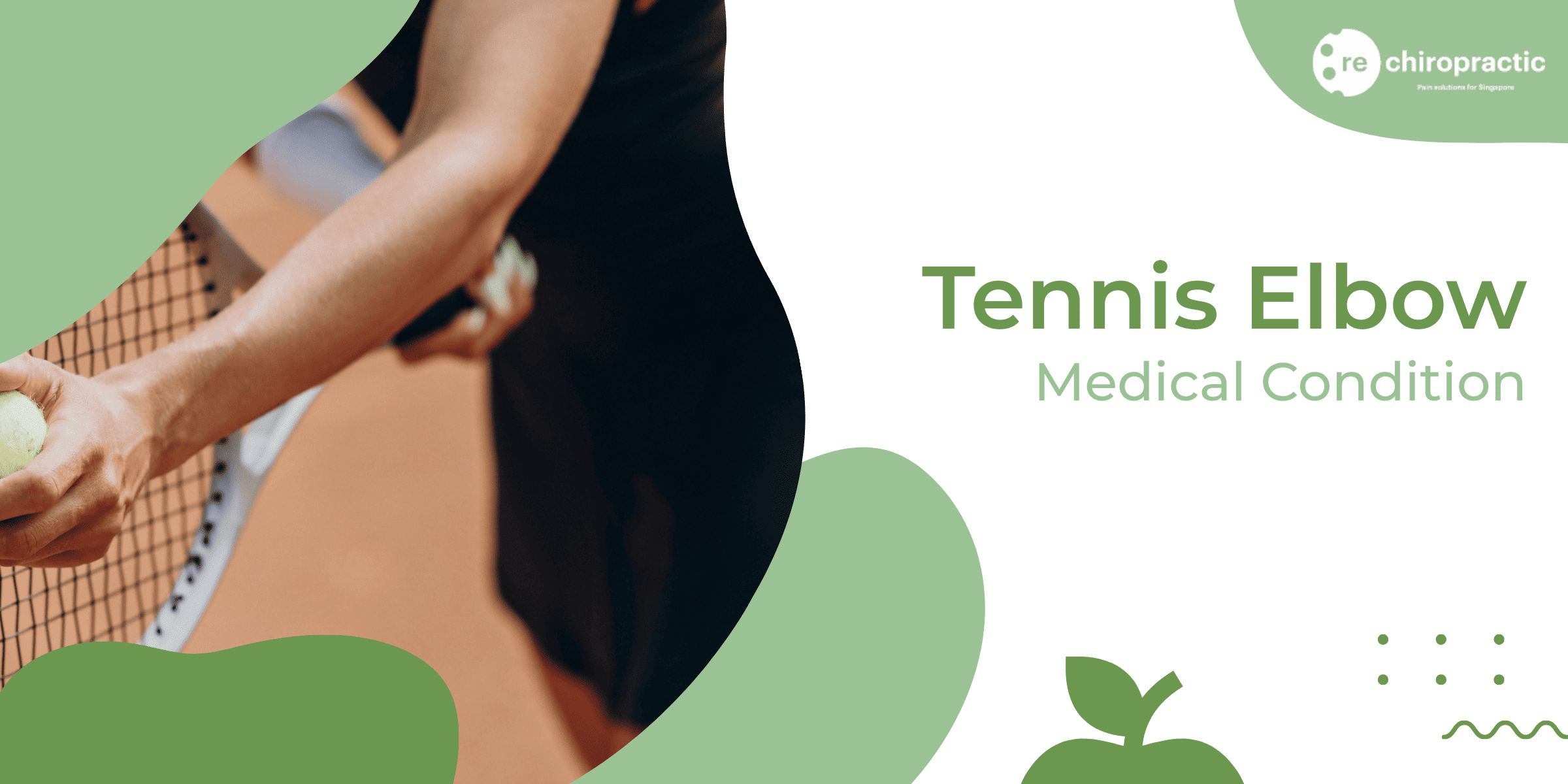
Tennis Elbow: Understanding the Painful Condition
Tennis elbow, also known as lateral epicondylitis, is a common condition that affects the tendons in the elbow. Despite its name, this condition is not limited to tennis players but can occur in anyone who repetitively uses their forearm muscles. It is characterized by pain and tenderness on the outer part of the elbow, which can radiate down the forearm.
Tennis elbow is typically caused by overuse or repetitive strain on the tendons that connect the forearm muscles to the bony prominence on the outside of the elbow. This strain can lead to small tears in the tendons, resulting in pain and inflammation. While playing tennis can certainly contribute to the development of this condition, it can also be caused by other activities such as painting, typing, or using tools that require gripping and twisting motions.
There are different stages of tennis elbow, ranging from mild discomfort to severe pain that can interfere with daily activities. In the early stages, individuals may experience occasional pain during activities that involve gripping or lifting. As the condition progresses, the pain may become more persistent and can be felt even at rest. In some cases, individuals may also experience weakness in their grip strength.
Several risk factors can increase the likelihood of developing tennis elbow. These include age (most commonly affects individuals between the ages of 30 and 50), repetitive arm motions, improper technique during physical activities, and certain occupations that involve repetitive arm movements.
Symptoms & Different Stages of Tennis Elbow
The symptoms can vary from mild to severe and may develop gradually over time. Here are some common symptoms and different stages of tennis elbow:
- Pain or tenderness on the outer part of the elbow
- Difficulty gripping objects or performing simple tasks
- Weakness in the forearm
- Stiffness and limited range of motion in the elbow
- Worsening pain when lifting or bending the arm
It is important to note that the severity of symptoms can vary from person to person. In the early stages of tennis elbow, individuals may experience mild discomfort and occasional pain during certain activities. However, as the condition progresses, the pain may become more persistent and intense, making it difficult to perform everyday tasks.
If you suspect you may have tennis elbow, it is advisable to consult a healthcare professional for a proper diagnosis. While self-diagnosis can be helpful, it is essential to rule out other conditions that may present similar symptoms. If the pain persists, worsens, or if you experience severe pain, it is recommended to seek medical attention promptly. Early intervention and appropriate treatment can help prevent further damage and promote a faster recovery.
Most Common Causes of Tennis Elbow
Tennis elbow is primarily associated with tennis players, this condition can actually affect anyone who repeatedly uses their forearm muscles. Here are the most common causes of tennis elbow:
- Repetitive Movements: Engaging in activities that involve repetitive movements of the forearm and wrist, such as playing tennis, golf, or painting, can put excessive strain on the tendons. This repetitive stress can lead to the development of tennis elbow.
- Improper Technique: Using incorrect technique or form while performing certain activities can also contribute to the development of tennis elbow. For example, gripping a tennis racket too tightly or using improper swing mechanics can increase the risk of injury.
- Overuse: Overusing the forearm muscles without giving them adequate time to rest and recover can lead to the development of tennis elbow. This is particularly common in individuals who engage in repetitive activities for extended periods without taking breaks.
- Age and Gender: Tennis elbow is more prevalent in individuals between the ages of 30 and 50. Additionally, men are more likely to develop this condition compared to women.
- Occupational Factors: Certain occupations that involve repetitive motions of the forearm, such as carpentry, plumbing, or cooking, can increase the risk of developing tennis elbow. Individuals in these professions are more prone to this condition due to the constant strain on their tendons.
How bad will tennis elbow be if left untreated?
- Persistent pain: If left untreated, tennis elbow can result in persistent and worsening pain in the elbow and forearm. This pain can become chronic and may limit your ability to perform daily activities and participate in sports or hobbies.
- Decreased grip strength: As the condition progresses, you may experience a decrease in grip strength. This can make it difficult to hold objects, such as a coffee cup or a pen, and can impact your ability to perform tasks that require a strong grip.
- Difficulty with fine motor skills: Tennis elbow can also affect your fine motor skills. Tasks that require precise movements, such as typing, writing, or playing a musical instrument, may become challenging and painful.
- Loss of range of motion: Without proper treatment, tennis elbow can lead to a loss of range of motion in the elbow joint. This can make it difficult to fully extend or flex your arm, limiting your ability to perform certain movements and activities.
- Impact on daily life: The pain and limitations caused by tennis elbow can have a significant impact on your daily life. Simple tasks like opening a door, lifting a grocery bag, or even shaking hands can become painful and difficult.
- Psychological impact: Chronic pain and limitations in daily activities can also have a psychological impact. It can lead to frustration, anxiety, and even depression, as the condition may affect your overall quality of life and ability to engage in activities you enjoy.
Chiropractic for Tennis Elbow
Fortunately, chiropractic care offers effective treatment options for individuals suffering from this condition. Chiropractors are trained professionals who specialize in the diagnosis and treatment of musculoskeletal disorders, including tennis elbow.
Here are some ways in which chiropractic care can help alleviate the symptoms of tennis elbow:
- Spinal adjustments: Chiropractors can perform spinal adjustments to correct any misalignments in the spine. These misalignments can contribute to tennis elbow by placing additional stress on the affected tendons and muscles. By realigning the spine, chiropractors can help reduce pain and promote proper healing.
- Soft tissue therapy: Chiropractors are skilled in various soft tissue techniques, such as massage therapy and myofascial release. These techniques help to relax tight muscles, improve blood circulation, and reduce inflammation in the affected area.
- Joint mobilization: Chiropractors can also perform joint mobilization techniques to restore proper joint function and range of motion. This can be particularly beneficial for individuals with tennis elbow, as restricted joint movement can contribute to pain and stiffness.
- Exercise prescription: Chiropractors can prescribe specific exercises and stretches to strengthen the muscles and tendons surrounding the elbow joint. These exercises can help improve flexibility, reduce pain, and prevent future injuries.
- Ergonomic advice: Chiropractors can provide valuable advice on ergonomics and proper body mechanics to individuals with tennis elbow. They can assess workplace or sports-related activities and make recommendations to minimize strain on the affected area.
It is important to note that chiropractic care for tennis elbow should be tailored to each individual’s specific needs. A thorough evaluation by a chiropractor will help determine the most appropriate treatment plan, which may include a combination of the above techniques. Chiropractic care aims to address the underlying causes of tennis elbow, alleviate pain, and improve overall function.
Self Help & Relief for Tennis Elbow
If you are experiencing the discomfort and pain associated with tennis elbow, there are several self-help methods you can explore to alleviate your symptoms. These methods can be used in conjunction with chiropractic care to provide you with the relief you need.
- Rest: One of the most important self-help methods for tennis elbow is to rest the affected arm and avoid any activities that aggravate the condition. This includes avoiding repetitive motions and lifting heavy objects.
- Ice Therapy: Applying ice to the affected area can help reduce inflammation and relieve pain. Wrap an ice pack or a bag of frozen peas in a thin towel and apply it to the elbow for 15-20 minutes at a time, several times a day.
- Compression: Using a compression bandage or brace can help reduce swelling and provide support to the affected area. Make sure the compression is not too tight to restrict blood flow.
- Elevation: Elevating your arm above heart level can help reduce swelling and promote healing. Use a pillow or cushion to prop up your arm whenever possible.
- Stretching and Strengthening Exercises: Gentle stretching and strengthening exercises can help improve flexibility and stability in the affected arm. Your chiropractor can guide you through specific exercises that target the muscles and tendons involved in tennis elbow.
- Use of a Counterforce Brace: A counterforce brace can be worn around the forearm to help distribute forces away from the injured tendon. This can provide pain relief and support during activities.
It is important to note that while these self-help methods can provide temporary relief, they may not address the underlying cause of your tennis elbow. If your symptoms persist or worsen despite these measures, it is recommended to seek professional help from a chiropractor or healthcare provider.
When to Seek Medical Help for Tennis Elbow
Living with chronic pain can be debilitating and affect your quality of life. If you are experiencing symptoms of tennis elbow, it is important to seek medical help as soon as possible. While there are self-relief methods that can provide temporary relief, it is crucial to address the underlying cause of the condition.
If you have been experiencing persistent pain in your elbow, forearm, or wrist, and it is affecting your ability to perform everyday tasks, it is time to consult a medical professional. They will be able to evaluate your symptoms, perform a thorough examination, and provide an accurate diagnosis.
It is not advisable to endure and live with the pain caused by tennis elbow. Ignoring the symptoms or delaying treatment can lead to further complications and prolonged recovery time. Seeking medical help early on can prevent the condition from worsening and help you regain function and mobility in your affected arm.
A qualified healthcare provider, such as a chiropractor, can offer effective treatment options for tennis elbow. They will develop a personalized treatment plan that may include chiropractic adjustments, soft tissue therapy, rehabilitative exercises, and lifestyle modifications.
Remember, you don’t have to suffer in silence. Reach out to a medical professional who specializes in treating tennis elbow to get the relief you deserve.

Dr. Jenny Li is America trained chiropractor who specialises in sports injury, sports performance, and spinal health. She graduated from Palmer College of Chiropractic in United States, upon completion of the her post graduate program she practiced in Hong Kong and currently is practicing in Singapore.

